W is for Water
The next letter in the A to Z Science series for toddlers and preschoolers at Inspiration Laboratories is W. W is for Water. We’ve done lots of water experiments in the past, so I wanted to focus on introducing the properties of water to young children. Explore what dissolves in water and take a look at surface tension.
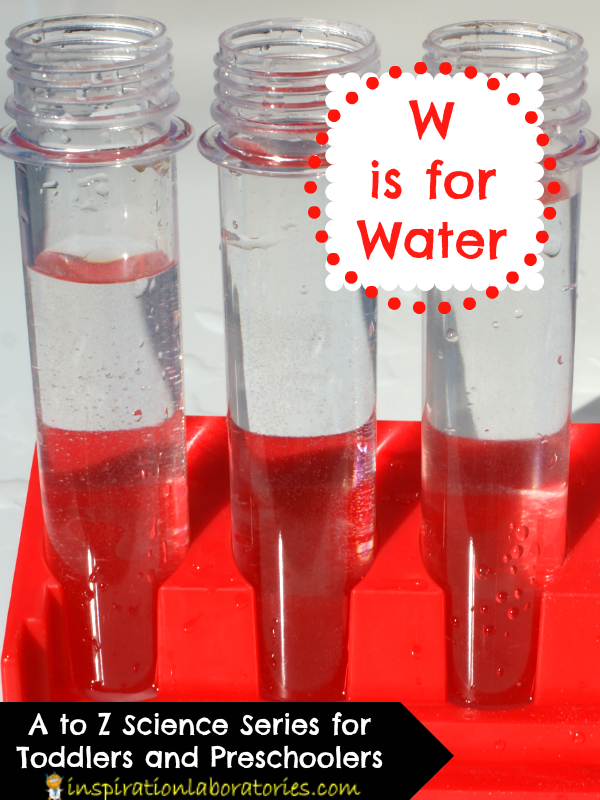
W is for Water
I chose to focus on two properties of water that would be easy for toddlers and preschoolers to experience. Let’s observe how water is the universal solvent and also look at cohesion and surface tension.
Water is the Universal Solvent
This means that water can dissolve most things. (Water has a high solubility.) If we were learning about chemistry, we would talk about the polarity of water, its shape, and its charge to explain what happens. That’s not appropriate for toddlers and preschoolers, so we will just stick with saying that water dissolves many things.
What does dissolve mean? Let’s think about the sugar we put in our tea. We can see the sugar before we add it to the tea. What happens after we add it to the tea? We can no longer see it? Is the sugar still there? Yes. It is just in much smaller pieces. The sugar dissolved into the tea. (Or if you’ve ever played with cornstarch and water, what happens when you add too much water? The cornstarch dissolves.)
Supplies You’ll Need:
- Water
- Test tubes, bowl, or cups
- Substances to test (we used sugar, salt, baking soda, and flour)
- Something to use for stirring (stirring rod, chopstick, or spoon)
For our investigation, we’re looking at what things will dissolve in water. Aiden chose to test salt, baking soda, and flour in addition to sugar.
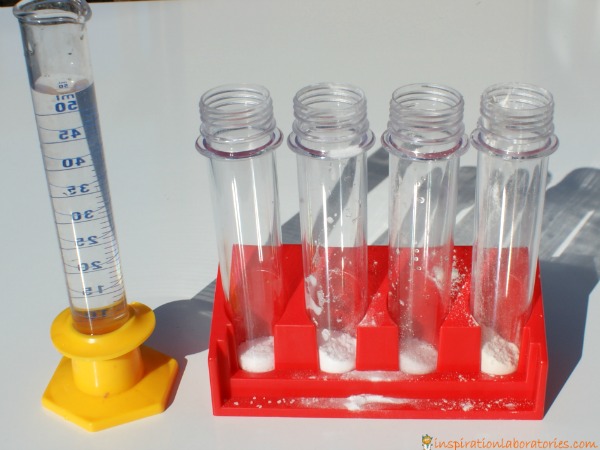
He added a 1/2 teaspoon of each to test tubes and then filled the test tubes with water and stirred.

We found that all 4 substances dissolved in water. The salt, baking soda, and sugar in water are considered solutions. They have small particles. The flour and water was cloudy. The flour still dissolved in the water. The particles are just larger and we can see them. We call this type of solution a colloid.
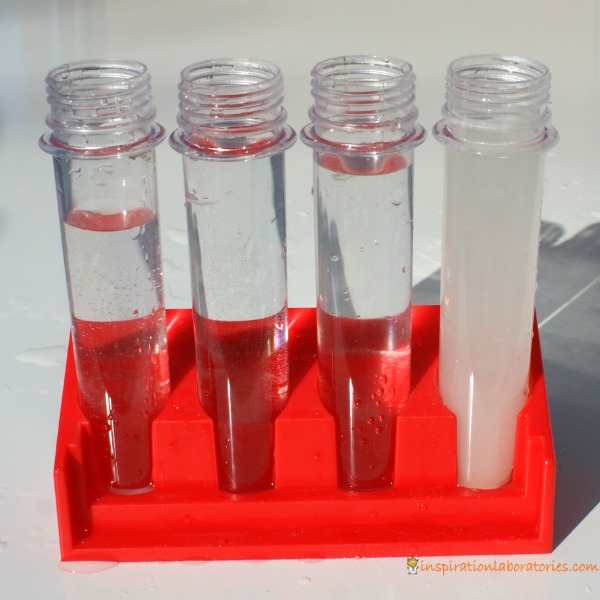
Bonus Investigation: Which test tube contains baking soda?
Now that the substances were dissolved in the water, I challenged Aiden to figure out which one had baking soda in it. (I rearranged the test tubes.) I asked him what he knew about baking soda. He said, “it dissolves in water.” I asked what else. He said he knew it dissolved in vinegar. This is sort of correct since our vinegar is mixed with water. I asked him what else happened when it dissolved in the vinegar. He said it made bubbles. Yes. Baking soda reacts with vinegar to make water, a salt, and carbon dioxide (bubbles).
Aiden added vinegar to each of the test tubes. He was looking for bubbles.

Only one test tube reacted with the vinegar to produce bubbles. He determined that test tube had the baking soda.
Exploring Surface Tension
Surface tension and cohesion is the reason water drops are a spherical shape. This investigation simply looks at these water drops.
Supplies You’ll Need:
- Water
- Dropper (You can also use a spoon or syringe)
- Soap
- Food coloring (optional)
- Container or surface for the investigation
Part 1: Just Water
Add food coloring to your water if desired. Use the dropper to drop one drop of water into your container. Place the dropper close to the surface to minimize the effect of gravity. (We were outside and dropped our water directly onto tile board.)
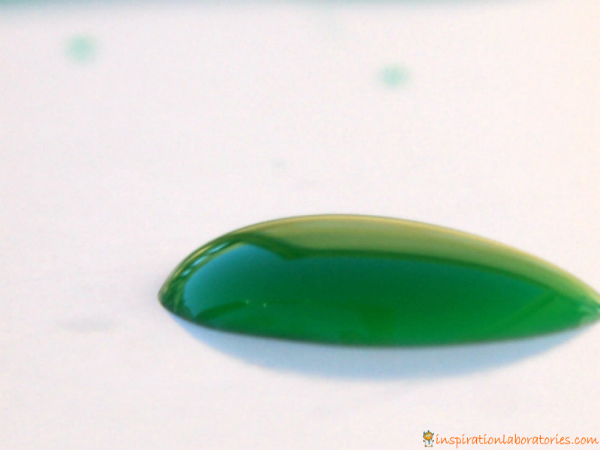
Take a look at the water drop. Notice how tall it is. See how it looks like a bubble.
Drop more water drops and observe those as well.
Part 2: Soap and Water
What will happen to the water drops if we add soap to the water?
Use the dropper to drop one drop of soapy water into your container. Observe the water drop. Does it look the same as the water drops with only water?
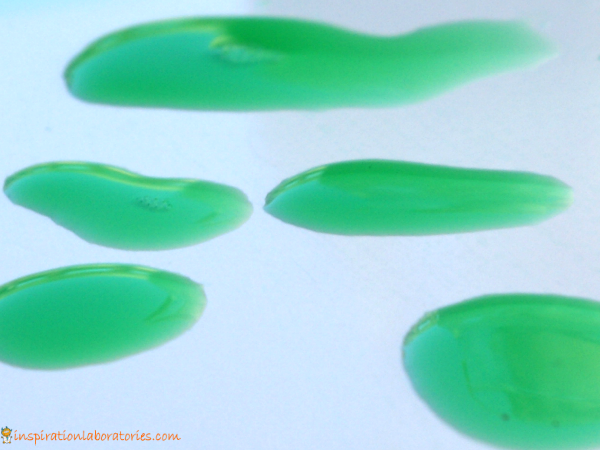
Drop more water drops. Observe and have fun exploring the water.
The Science Behind It:
Soap lowers the surface tension of water by interrupting the hydrogen bonds between water molecules. This means you should see less of a bubble. This is helpful for cleaning your clothes. The soap allows the water to soak into fabric more easily and reach the dirt.
More Water Experiments
- Lots of water science ideas for kids are in this post. Try the simple water exploration plus other fun ideas.
- Learn about mixtures and try to combine oil and water.
- Use water to explore concepts of volume.
- Check out all of our activities involving water.
Subscribe to our weekly newsletter and get exclusive science explorations for young scientists in each issue.
![]()

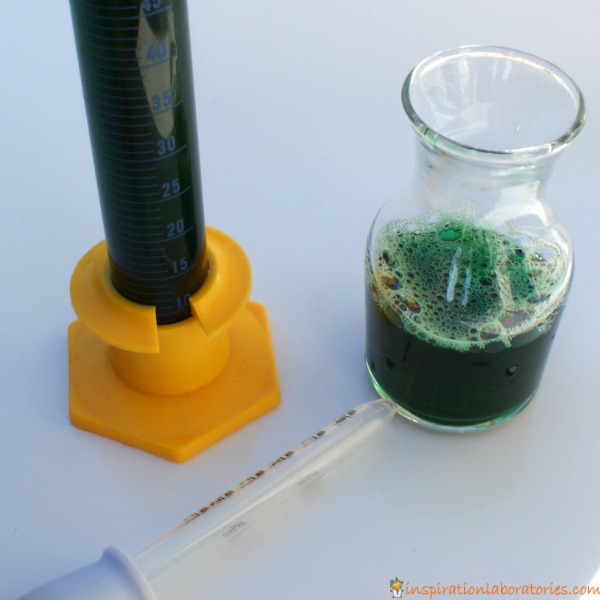
Leave a Reply